National Trust hunt for ancient trees
A National Trust survey of 40,000 ancient trees includes Newton's apple tree and the yew that overlooked the signing of the Magna Carta

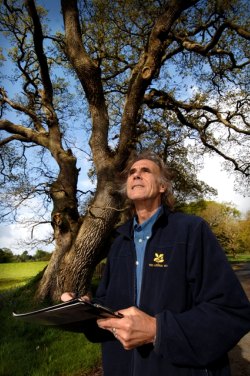
The National Trust has announced a new three-year project surveying the ancient trees on its land, including Newton’s apple tree and a yew that overlooked the signing of the Magna Carta.
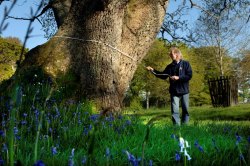
Mike Thomas/National Trust
The National Trust has more than 25,000 hectares of woodland, 200,000 hectares of farmland and 135 landscape and deer parks, so it’s estimated that there are more than 40,000 ancient trees on Trust land.
Ancient trees can provide extremely valuable habitats for rare fungi, lichens and deadwood invertebrates. By studying these trees, the Trust hopes to ensure that there are enough replacement ancient trees in the future.
The trees on Trust land include Newton’s apple tree at Woolsthorpe in Lincolnshire, the sycamore tree in Dorset where the Tolpuddle Martyrs met in the 1830s, and the 2,000-year-old Ankerwycke yew at Runnymede in Berkshire where the Magna Carta was sealed.
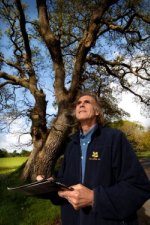
Mike Thomas/National Trust
Ray Hawes, head of forestry for the National Trust, said: ‘Ancient trees can be thought of as the cathedrals of the natural world. This new survey will provides us with the opportunity to understand more about these special trees in our care and map their exact locations.
Exquisite houses, the beauty of Nature, and how to get the most from your life, straight to your inbox.
‘Trees play such an important part in shaping our landscapes and reflecting our history that we need to make sure that the ancient trees in our care and the next generation to follow them can be enjoyed by everyone.’
Brian Muelaner, the new National Trust Ancient Tree Advisor, added: ‘Standing next to an ancient tree that has lived through centuries of history can be a truly humbling experience. We want to champion these special trees and raise their profile.’
An ancient tree is one that is very old in comparison with other trees of the same species, so a 600-year-old oak or a 300-year-old beech would qualify. Yew trees can live for several thousand years, and oak and sweet chestnut for 1,000 years or more.
Five iconic National Trust trees • The Tolpuddle Martyrs' Tree, Dorset: the Tolpuddle Martyrs met here in 1834 in an attempt to form one of the world's first trade unions, against a background of falling wages and harsh employment laws. The meeting led to their deportation, pardon and, ultimately, the foundation of the trade union movement • The yews at Crom Castle, Co Fermanagh, Northern Ireland: two yews near the old ruins of Crom Castle were planted close together in the 17th century. By the 19th century, they were described as being ‘an enormous green mushroom in contour’. Parties of 200 people have dined beneath their branches, which, at their peak, were 75ft across
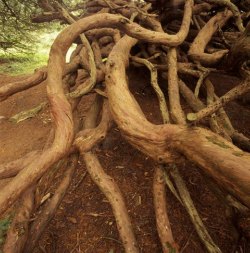
• The Ankerwycke Yew, Runnymede, Berkshire: a 2,000-year-old icon, the yew is said to have witnessed the oathing and sealing of the Magna Carta by King John in June 1215 and to be the location where Henry VIII met Anne Boleyn in the 1530s. It grows in the grounds of the ruined Priory of Ankerwycke and now measures 31ft wide • The Borrowdale Yew, Cumbria: one of the four ancient yews celebrated in Wordsworth’s 1803 poem Yew Trees. The Borrowdale Yew is female and boasts a large hollow that fits four people. Although it was damaged in a storm in 2005, it still thrives • Isaac Newton’s apple tree, Woolsthorpe Manor, Lincolnshire: it’s believed to be the apple tree that inspired Isaac Newton in 1665 when the ‘notion of gravitation came to mind’ after he watched an apple fall. The tree, a rare variety Flower of Kent, fell over in 1820, but is still growing well, having rooted where the trunk touched the ground
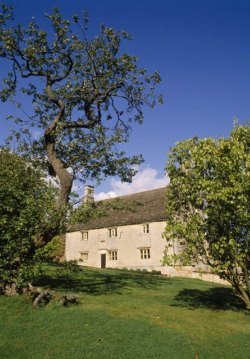
Five top National Trust ancient tree sites • The Spanish Chestnuts in the grounds at Croft Castle, Herefordshire, are a famous avenue of pollarded sweet chestnuts. The tale of the chestnuts’ origins suggests that the nuts came from the wrecks of the Spanish Armada in 1592, making some of the trees more than 400 years old • Some of the oaks at Dinefwr Park and Castle are about 700 years old. They’re left to die slowly, providing vital habitat for hundreds of insects. More than 400 species of beetle have been found at Dinefwr, making it one of the best sites in the UK for invertebrates that depend on deadwood • Hatfield Forest was declared a forest, in the early 12th century, when fallow deer were introduced. Its function was the supply of deer for the King’s table and for ceremonial hunts. It’s an example of a land-use system and vegetation pattern dating from early medieval times that is still functioning today

• The park at Petworth in West Sussex is a masterpiece of 'Capability' Brown. The 650-acre deer park is home to a herd of fallow deer, ancient trees and water fowl. Ornamental trees and shrubs, azaleas, daffodils and meadow flowers inhabit the pleasure ground • Forestry work at Lanhydrock in Cornwall has enabled wildlife to thrive. The woods are home to more than 180 species of lichen, at least twelve of the 17 species of British bat, 77 species of decay beetle and the illusive dormouse
Country Life is unlike any other magazine: the only glossy weekly on the newsstand and the only magazine that has been guest-edited by His Majesty The King not once, but twice. It is a celebration of modern rural life and all its diverse joys and pleasures — that was first published in Queen Victoria's Diamond Jubilee year. Our eclectic mixture of witty and informative content — from the most up-to-date property news and commentary and a coveted glimpse inside some of the UK's best houses and gardens, to gardening, the arts and interior design, written by experts in their field — still cannot be found in print or online, anywhere else.
